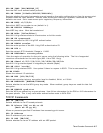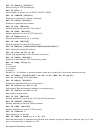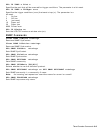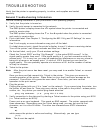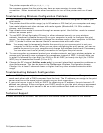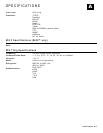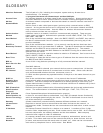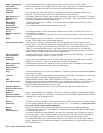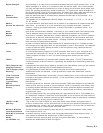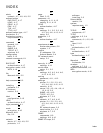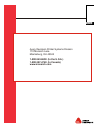
GLOSSARY
G
Absolute Pathname The full path of a file, including the computer system and any directories or
subdirectories. For example,
c:\program files\monarch software\mpcl toolbox\9460.phu
Access Point An interface between a wireless network and a wired network. Access points can be
used with Ethernet or other communications to enable roaming throughout a facility.
Ad-Hoc
Network/Mode
A wireless network composed of devices that contain a network interface card and no
access point.
Ad-Hoc mode is also called peer-to-peer (point-to-point) communications or BSS
network. As long as the devices are in range and are on the same channel and SSID,
they connect and communicate. Use this mode if a wireless infrastructure does not
exist or where services are not required.
Authentication
Method
Identifies users on a network, based on a username and password. There are two
types: open and shared. Authentication protocols include LEAP, PEAP, TLS, TTLS,
EAP-FAST, and PSK.
Auto Method One of the available boot methods. Auto tries DHCP, BOOTP, and RARP, then sets to
the last IP address used if the IP address is not automatically set using any of the
previous methods.
BOOTP or
Bootstrap Protocol
One of the available boot methods. It is a protocol used by devices that know their
MAC address, but do not know their IP address. The device broadcasts its hardware
address and the BOOTP server responds with the IP address for it. The network
administrator must enter the MAC address in the BOOTP Config file to obtain the IP
address from the server.
Boot Method The wireless print server uses this method to obtain an IP address. Can be set to Auto,
DHCP, BOOTP, RARP, or Static.
Boot Tries The number of times the device tries to get an IP address from the server when using
the BOOTP and DHCP methods.
BSS or
Basic Service Set
A set of 802.11b/g devices operating as a fully connected wireless network.
BSSID See MAC Address.
Channel or
RF Channel
You can select which channel your network devices use to communicate. All devices
must be on the same channel to communicate in Ad-Hoc mode. Other radio devices
such as Bluetooth® wireless devices, microwave ovens, or
2.4-GHz cordless phones may operate/interfere if they are on the same channel as your
network.
DHCP or
Dynamic Host
Configuration
Protocol
One of the available boot methods. It is a protocol that issues IP addresses
automatically within a specified range to devices (such as printers) when they are first
turned on. The device keeps the IP address for a defined period of time set by your
System Administrator; however, a device could have a different IP address every time it
connects to the network.
EAP (Extensible
Authentication
Protocol)
Defines how to pass authentication information between the device and authentication
server. The authentication is handled by the EAP type: FAST, TLS, TTLS, etc.
FAST (Flexible
Authentication via
Secure Tunneling)
Cisco Systems® developed this authentication protocol.
It does not use certificates to authenticate, but a PAC (Protected Access Credential),
which is managed dynamically by the server. The PAC is distributed one at a time to
the client manually or automatically.
Gateway Allows connections (communications) between different subnets on a network.
Infrastructure
Mode
Requires an access point to communicate with other devices on the network. In
infrastructure mode, wireless devices can communicate with each other or with a wired
network.
IP Address An Internet Protocol identifier for a device on a network. It consists of four 3-digit
numeric fields, separated by periods. Each number can be zero to 255. An IP address
has two components, the network address and the host address. Most company
networks have ranges for their IP addresses.
LAN or
Local Area
Network
A computer network that connects personal computers, workstations, servers, and
printers. This allows each user on the network the ability to share devices, such as
printers, and communicate with each other via email, etc. LANs can be connected to
each other by telephone lines or radio waves. See WLAN.
Glossary G-1



